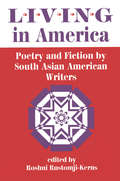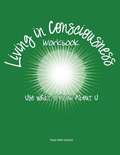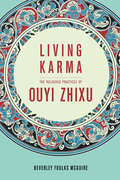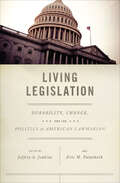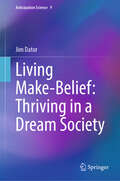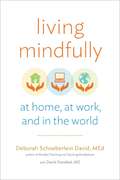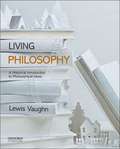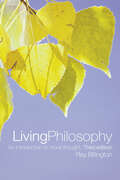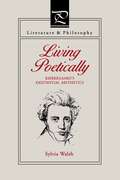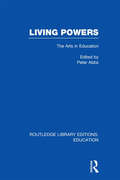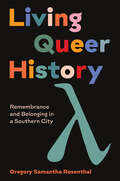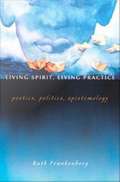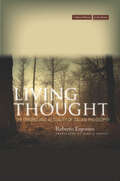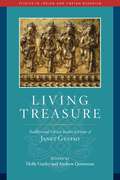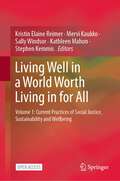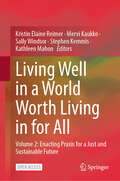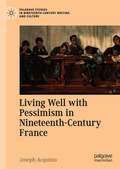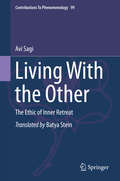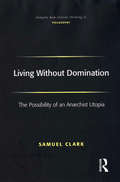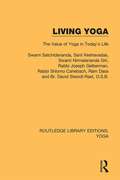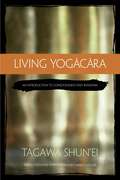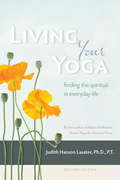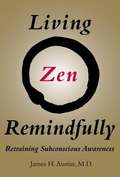- Table View
- List View
Living Genres in Late Modernity: American Music of the Long 1970s
by Charles KronengoldLiving Genres in Late Modernity rehears the American 1970s through the workings of its musical genres. Exploring stylistic developments from the late 1960s through the early 1980s, including soul, funk, disco, pop, the nocturne, and the concerto, Charles Kronengold treats genres as unstable constellations of works, people, practices, institutions, technologies, money, conventions, forms, ideas, and multisensory experiences. What these genres share is a significant cultural moment: they arrive just after "the sixties" and are haunted by a sense of belatedness, loss, or doubt, even as they embrace narratives of progress or abundance. These genres give us reasons—and means—to examine our culture’s self-understandings. Through close readings and large-scale mappings of cultural and stylistic patterns, the book’s five linked studies reveal how genres help construct personal and cultural identities that are both partial and overlapping, that exist in tension with one another, and that we experience in ebbs and flows.
Living In America: Poetry And Fiction By South Asian American Writers
by Roshni Rustomji-KernsPerceptions and realities of life in North America are interwoven with memories of South Asia in this anthology of literary works focusing on South Asian American perspectives on the United States and Canada. Most of the short stories and poems deal explicitly with South Asian American experiences.
Living In Consciousness: Use What U Know About U
by Paula Heller GarlandLiving in Consciousnesses is a workbook based on self examination to achieve an elaborate, happy, healthy and fulfilled life. Covering self-knowledge, your believes, your perception, how you relate to and with others, Living in Consciousness aims at developing healthier and effective relationships.
Living Karma: The Religious Practices of Ouyi Zhixu (The Sheng Yen Series in Chinese Buddhist Studies)
by Beverley McGuireOuyi Zhixu (1599–1655) was an eminent Chinese Buddhist monk who, contrary to his contemporaries, believed karma could be changed. Through vows, divination, repentance rituals, and ascetic acts such as burning and blood writing, he sought to alter what others understood as inevitable and inescapable. Drawing attention to Ouyi's unique reshaping of religious practice, Living Karma reasserts the significance of an overlooked individual in the modern development of Chinese Buddhism.While Buddhist studies scholarship tends to privilege textual analysis, Living Karma promotes a balanced study of ritual practice and writing, treating Ouyi's texts as ritual objects and his reading and writing as religious acts. Each chapter addresses a specific religious practice—writing, divination, repentance, vows, and bodily rituals—offering first a diachronic overview of each practice within the history of Chinese Buddhism and then a synchronic analysis of each phenomenon through close readings of Ouyi's work. This book sheds much-needed light on a little-known figure and his representation of karma, which proved to be a seminal innovation in the religious thought of late imperial China.
Living Legislation: Durability, Change, and the Politics of American Lawmaking
by William J. Novak Jeffrey E. Cohen David R. Mayhew William G. Howell Forrest Maltzman Matthew Eshbaugh-Soha Barry C. Burden Vesla M. Weaver Stuart Chinn Sidney M. Milkis Amihai Glazer Sean Gailmard David E. Lewis Charles R. Shipan Christopher R. BerryPolitical scholars examine the dynamic evolution of laws over time in a volume that &“pushes the frontiers of knowledge about lawmaking in the US&” (Choice). Politics is at its most dramatic during debates over important pieces of legislation. And while debates over legislative measures can rage for years or even decades before an item is enacted, they also endure long afterward, when the political legacy of a law eventually comes into focus. With a diverse set of contributors—including quantitative political scientists, political development scholars, historians, and economists—Living Legislation provides fresh insights into contemporary American politics and public policy. Many of the contributors to this volume focus on the question of why some laws stand the test of time while others are eliminated, replaced, or significantly amended. Others discuss how laws emerge from—and effect change within—coalition structures; the effectiveness of laws at mediating partisan conflicts; and the ways in which laws interact with broader shifts in the political environment. An essential addition to the study of politics, Living Legislation enhances understanding of democracy, governance, and power.
Living Make-Belief: Thriving in a Dream Society (Anticipation Science #9)
by Jim DatorThis book shows how multiple developments have caused the world to move from “an information society” to a “dream society”. Ongoing social and technological forces are pushing us from a world of words, rationality, and truth into a world of images, performance, and make-belief. Rather than deny or reject this transformation, this book argues that one should understand and embrace it as waves of new futures that the world must strive to surf for fame and fun. As a political scientist and futurist, the author also offers hints of new goals and forms of governance fit for a dream society, as he demonstrates that all current systems are ineffective and dangerously obsolete. This book is of great interest to political philosophers, futures scientists, sociologists, and those interested in cultural studies.
Living Mindfully
by Deborah Schoeberlein David David PanakkalLearn to live a life that's good--for yourself and for the world.Like a wise friend or kind teacher, Deborah Schoeberlein David--educator, meditator, and mother--walks you through a complete, easy-to-follow curriculum of mindfulness practice. Beginning with the very basics of noticing your breath, David shows how simple mindfulness practices can be utterly transforming. Each practice builds on the previous exercise like a stepping stone, until you have the tools to bring mindfulness into every aspect of your life including sex, parenting, relationships, job stresses, and more. This is an approachable guide for anyone who desires positive change.
Living Philosophy: A Historical Introduction to Philosophical Ideas
by Lewis VaughnThis second edition of Living Philosophy guides students in a survey of the historical march of philosophical ideas, encouraging an appreciation of the significance of these ideas in Western and Eastern thought. Living Philosophy provides this guidance in five fundamental ways: it tells a coherent story of philosophical thought from the pre-Socratics to the present; it provides the cultural and intellectual background for this story; it explains why the major issues and arguments are important and relevant today; it includes substantial, well-chosen excerpts from the philosophers' works; and it presents all these elements in a way that engages and stimulates student interest and understanding. Living Philosophy includes solid coverage of critical-thinking skills and argument basics as well as practice in reading philosophical works. Students learn how to do philosophy--to think and write philosophically--when they get encouragement and practice in analyzing and critiquing their own views as well as those philosophers they study. To this end, Living Philosophy emphasizes philosophical writing, reinforced with step-by-step coaching in how to write argumentative essays on philosophical topics and supported by multiple opportunities to hone basic skills. Living Philosophy further engages today's learners with abundant illustrations and graphics; marginal glosses, questions, and quotations; profiles of a diverse array of philosophers; and ample representation of non-Western and nontraditional sources and voices.
Living Philosophy: An Introduction to Moral Thought
by Ray BillingtonFirst published in 2003. Routledge is an imprint of Taylor & Francis, an informa company.
Living Poetically: Kierkegaard's Existential Aesthetics (Literature and Philosophy)
by Sylvia WalshLiving Poetically is the first book to focus primarily on Kierkegaard's existential aesthetics as opposed to traditional aesthetic features of his writings such as the use of pseudonyms, literary techniques and figures, and literary criticism. Living Poetically traces the development of the concept of the poetic in Kierkegaard's writings as that concept is worked out in an ethical-religious perspective in contrast to the aesthetics of early German romanticism and Hegelian idealism. Sylvia Walsh seeks to elucidate what it means, in Kierkegaard's view, to be an authentic poet in the form of a poetic writer and to clarify his own role as a Christian poet and writer as he understood it. Walsh shows that, in spite of strong criticisms made of the poetic in some of his writings, Kierkegaard maintained a fundamentally positive understanding of the poetic as an essential ingredient in ethical and religious forms of life. Walsh thus reclaims Kierkegaard as a poetic thinker and writer from those who would interpret him as an ironic practitioner of an aestheticism devoid of and detached from the ethical-religious as well as from those who view him as rejecting the poetic and aesthetic on ethical or religious grounds.Viewing contemporary postmodern feminism and deconstruction as advocating a romantic mode of living poetically, Walsh concludes with a feminist reading of Kierkegaard that affirms both individuality and relatedness, commonalities and differences between the self and others, men and women, for the fashioning of an authentic mode of living poetically in the present age.
Living Powers: The Arts in Education (Routledge Library Editions: Education)
by Peter AbbsWhen originally published this was the first book to offer a collective history of all the arts – Art, Drama, Dance, Music, Literature and Film – in the curriculum. It also offers a coherent framework for the teaching of arts which is in line with the best current trends since the Gulbenkian Report of 1982. It insists that the arts, seen together should be an essential part of the national curriculum.
Living Queer History: Remembrance and Belonging in a Southern City
by Gregory Samantha RosenthalQueer history is a living practice. Talk to any group of LGBTQ people today, and they will not agree on what story should be told. Many people desire to celebrate the past by erecting plaques and painting rainbow crosswalks, but queer and trans people in the twenty-first century need more than just symbols—they need access to power, justice for marginalized people, spaces of belonging. Approaching the past through a lens of queer and trans survival and world-building transforms history itself into a tool for imagining and realizing a better future. Living Queer History tells the story of an LGBTQ community in Roanoke, Virginia, a small city on the edge of Appalachia. Interweaving &8239;historical analysis, theory, and memoir, Gregory Samantha Rosenthal tells the story of their own journey—coming out and transitioning as a transgender woman—in the midst of working on a community-based history project that documented a multigenerational southern LGBTQ community. Based on over forty interviews with LGBTQ elders, Living Queer History explores how queer people today think about the past and how history lives on in the present.
Living Spirit, Living Practice: Poetics, Politics, Epistemology
by Ruth FrankenbergIn Living Spirit, Living Practice, the well-known cultural studies scholar Ruth Frankenberg turns her attention to the remarkably diverse nature of religious practice within the United States today. Frankenberg provides a nuanced consideration of the making and living of religious lives as well as the mystery and poetry of spiritual practice. She undertakes a subtle sociocultural analysis of compelling in-depth interviews with fifty women and men, diverse in race, ethnicity, national origin, class, age, and sexuality. Tracing the complex interweaving of sacred and secular languages in the way interviewees make sense of the everyday and the extraordinary, Frankenberg explores modes of communication with the Divine, the role of the body, the importance of geography, work for progressive social change, and the relation of sex to spirituality. Christians, Jews, Muslims, Buddhists, Hindus, and other practitioners come together here, speaking in terms both familiar and surprising. Whether discussing an Episcopalian deacon, a former Zen Buddhist who is now a rabbi, a Chicano monastic, an immigrant Muslim woman, a Japanese American Tibetan Buddhist, or a gay African American practicing in the Hindu tradition, Frankenberg illuminates the most intimate, local, and singular aspects of individual lives while situating them within the broad, dynamic canvas of the U. S. religious landscape.
Living Thought: The Origins and Actuality of Italian Philosophy
by Roberto EspositoThe work of contemporary Italian thinkers, what Roberto Esposito refers to as Italian Theory, is attracting increasing attention around the world. This book explores the reasons for its growing popularity, its distinguishing traits, and why people are turning to these authors for answers to real-world issues and problems. The approach he takes, in line with the keen historical consciousness of Italian thinkers themselves, is a historical one. He offers insights into the great "unphilosophical" philosophers of life-poets, painters, politicians and revolutionaries, film-makers and literary critics-who have made Italian thought, from its beginnings, an "impure" thought. People like Machiavelli, Croce, Gentile, and Gramsci were all compelled to fulfill important political roles in the societies of their times. No wonder they felt that the abstract vocabulary and concepts of pure philosophy were inadequate to express themselves. Similarly, artists such as Dante, Leonardo Da Vinci, Leopardi, or Pasolini all had to turn to other disciplines outside philosophy in order to discuss and grapple with the messy, constantly changing realities of their lives. For this very reason, says Esposito, because Italian thinkers have always been deeply engaged with the concrete reality of life (rather than closed up in the introspective pursuits of traditional continental philosophy) and because they have looked for the answers of today in the origins of their own historical roots, Italian theory is a "living thought. " Hence the relevance or actuality that it holds for us today. Continuing in this tradition, the work of Roberto Esposito is distinguished by its interdisciplinary breadth. In this book, he passes effortlessly from literary criticism to art history, through political history and philosophy, in an expository style that welcomes non-philosophers to engage in the most pressing problems of our times. As in all his works, Esposito is inclusive rather than exclusive; in being so, he celebrates the affirmative potency of life.
Living Treasure: Buddhist and Tibetan Studies in Honor of Janet Gyatso (Studies in Indian and Tibetan Buddhism)
by Holly Gayley and Andrew QuintmanSenior scholars and former students celebrate the life and work of Janet Gyatso, professor of Buddhist studies at Harvard Divinity School. Inspired by her contributions to life writing, Tibetan medicine, gender studies, and more, these offerings make a rich feast for readers interested in Tibetan and Buddhist studies.Janet Gyatso has made substantial, influential, and incredibly valuable contributions to the fields of Buddhist and Tibetan studies. Her paradigm-shifting approach is to take a topic, an idea, a text, a term—often one that had long been taken for granted or overlooked—and turn it inside out, to radically reimagine the kinds of questions that might be asked and what the answers might reveal. The twenty-nine essays in this volume, authored by colleagues and former students—many of whom are now also colleagues—represent the breadth of her interests and influence and the care that she has taken in training the current generation of scholars of Tibet and Buddhism. They are organized into five sections: Women, Gender, and Sexuality; Biography and Autobiography; the Nyingma Imaginaire; Literature, Art, and Poetry; and Early Modernity: Human and Nonhuman Worlds. Contributions include José Cabezón on the incorporation of a Buddhist rock carving in Central Asian culture; Matthew Kapstein on the memoirs of an ambivalent reincarnated lama; Willa Baker on Jikmé Lingpa&’s theory of absence; Andrew Quintman on a found poem expressing worldly sadness on the forced closure of a monastery; and Padma &’tsho on Tibetan women&’s advocacy for full female ordination. These and the many other chapters, each fascinating reads in their own right, together offer a glowing tribute to a scholar who indelibly changed the way we think about Buddhism, its history, and its literature.
Living Well in a World Worth Living in for All: Volume 1: Current Practices of Social Justice, Sustainability and Wellbeing
by Stephen Kemmis Kathleen Mahon Mervi Kaukko Kristin Elaine Reimer Sally WindsorThis open access book is the first of a two-volume series focusing on how people are being enabled or constrained to live well in today’s world, and how to bring into reality a world worth living in for all. The chapters offer unique narratives drawing on the perspectives of diverse groups such as: asylum-seeking and refugee youth in Australia, Finland, Norway and Scotland; young climate activists in Finland; Australian Aboriginal students, parents and community members; families of children who tube feed in Australia; and international research students in Sweden. The chapters reveal not just that different groups have different ideas about a world worth living in, but also show that, through their collaborative research initiative, the authors and their research participants were bringing worlds like these into being. The volume extends an invitation to readers and researchers in education and the social sciences to consider ways to foster education that realises transformed selves and transformed worlds: the good for each person, the good for humankind, and the good for the community of life on the planet. The book also includes theoretical chapters providing the background and rationale behind the notion of education as initiating people into ‘living well in a world worth living in'. An introductory chapter discusses the origins of the concept and the phrase.
Living Well in a World Worth Living in for All: Volume 2: Enacting Praxis for a Just and Sustainable Future
by Stephen Kemmis Kathleen Mahon Mervi Kaukko Kristin Elaine Reimer Sally WindsorThis open access book is the second of a two-volume series that explores how people are living well and creating a “World Worth Living in for All”. It engages in deep listening of voices from across the world and considers the role of education in creating a more just and sustainable world for the future. The book asks what can be learnt to create change in policy and practice in order to enact praxis. It showcases chapters from international authors who discuss current or new projects to address the overarching questions explored in the book. It also provides an overview of perspectives that connect both volumes and the individual projects presented together through the lens of practice architectures.
Living Well with Chronic Illness
by Committee on Living Well Chronic Disease: Public Action to Reduce Disability Improve Functioning Quality Of LifeIn the United States, chronic diseases currently account for 70 percent of all deaths, and close to 48 million Americans report a disability related to a chronic condition. Today, about one in four Americans have multiple diseases and the prevalence and burden of chronic disease in the elderly and racial/ethnic minorities are notably disproportionate. Chronic disease has now emerged as a major public health problem and it threatens not only population health, but our social and economic welfare. Living Well with Chronic Disease identifies the population-based public health actions that can help reduce disability and improve functioning and quality of life among individuals who are at risk of developing a chronic disease and those with one or more diseases. The book recommends that all major federally funded programmatic and research initiatives in health include an evaluation on health-related quality of life and functional status. Also, the book recommends increasing support for implementation research on how to disseminate effective longterm lifestyle interventions in community-based settings that improve living well with chronic disease. Living Well with Chronic Disease uses three frameworks and considers diseases such as heart disease and stroke, diabetes, depression, and respiratory problems. The book's recommendations will inform policy makers concerned with health reform in public- and private-sectors and also managers of communitybased and public-health intervention programs, private and public research funders, and patients living with one or more chronic conditions.
Living Well with Pessimism in Nineteenth-Century France (Palgrave Studies in Nineteenth-Century Writing and Culture)
by Joseph AcquistoThis book traces the emergence of modern pessimism in nineteenth-century France and examines its aesthetic, epistemological, ethical, and political implications. It explores how, since pessimism as a worldview is not empirically verifiable, writers on pessimism shift the discussion to verisimilitude, opening up rich territory for cross-fertilization between philosophy and literature. The book traces debates on pessimism in the nineteenth century among French nonfiction writers who either lauded its promotion of compassion or condemned it for being a sick and unliveable attempt at renunciation. It then examines the way novelists and poets take up and transform these questions by portraying characters in lived situations that serve as testing grounds for the merits or limitations of pessimism. The debate on pessimism that emerged in the nineteenth century is still very much with us, and this book offers an interhistorical argument for embracing pessimism as a way of living well in the world, aesthetically, ethically, and politically.
Living With the Other: The Ethic of Inner Retreat (Contributions To Phenomenology #99)
by Avi SagiThe book grapples with one of the most difficult questions confronting the contemporary world: the problem of the other, which includes ethical, political, and metaphysical aspects. A widespread approach in the history of the discourse on the other, systematically formulated by Emmanuel Levinas and his followers, has invested this term with an almost mythical quality—the other is everybody else but never a specific person, an abstraction of historical human existence. This book offers an alternative view, turning the other into a real being, through a carefully described process involving two dimensions referred to as the ethic of loyalty to the visible and the ethic of inner retreat. Tracing the course of this process in life and in literature, the book presents a broad and lucid picture intriguing to philosophers and also accessible to readers concerned with questions touching on the meaning of life, ethics, and politics, and particularly relevant to the burning issues surrounding attitudes to immigrants as others and to the relationship with God, the ultimate other.
Living Without Domination: The Possibility of an Anarchist Utopia (Ashgate New Critical Thinking in Philosophy)
by Samuel ClarkLiving Without Domination defends the bold claim that humans can organise themselves to live peacefully and prosperously together in an anarchist utopia. Clark refutes errors about what anarchism is, about utopianism, and about human sociability and its history. He then develops an analysis of natural human social activity which places anarchy in the real landscape of sociability, along with more familiar possibilities including states and slavery. The book is distinctive in bringing the rigour of analytic political philosophy to anarchism, which is all too often dismissed out of hand or skated over in popular history.
Living Yoga: The Value of Yoga in Today's Life (Routledge Library Editions: Yoga #5)
by Ram Dass Swami Satchidananda Sant Keshavadas Rabbi Joseph Gelberman Rabbi Shlomo Carlebach Br. David Steindl-Rast, O.S.B.The talks presented in this volume, first published in 1977, were originally delivered during a retreat in New York, in which speakers from a variety of spiritual traditions were represented. It aims to show the value of yoga in everyday life, and its relation to many other religions and philosophies.
Living Yogacara
by Charles Muller Tagawa Shun'EiYogacara is an influential school of Buddhist philosophy and psychology that stems from the early Indian Mahayana Buddhist tradition. The Yogacara view is based on the fundamental truth that there is nothing in the realm of human experience that is not interpreted by and dependent upon the mind. Yogacara Buddhism was unable to sustain the same level of popularity as other Buddhist schools in India, Tibet, and East Asia, but its teachings on the nature of consciousness profoundly impacted the successive developments of Buddhism. Yogacara served as the basis for the development of the doctrines of karma and liberation in many other schools. In this refreshingly accessible study, Tagawa Shun'ei makes sense of Yogacara's subtleties and complexities with insight and clarity. He shows us that Yogacara masters comprehend and express everyday experiences that we all take for granted, yet struggle to explain. Eloquent and approachable, Living Yogacara deepens the reader's understanding of the development of Buddhism's interpretation of the human psyche.
Living Your Yoga: Finding the Spiritual in Everyday Life (Second Edition)
by Judith Hanson Lasater<P>If you think that you have to retreat to a cave in the Himalayas to find the enlightenment that yoga promises, think again. In this second edition of Living Your Yoga, Judith Hanson Lasater stretches the meaning of yoga beyond its familiar poses and breathing techniques to include the events of daily life--all of them--as ways to practice. <P>This edition includes three new chapters (Relaxation, Empathy, and Worship), a full index, and new interior and cover designs. Using the time-honored wisdom of the Yoga Sutra and the Bhagavad Gita to steer the course, she serves up off-the-mat practices to guide you in deepening your relationships with yourself, your family and friends, and the world around you. <P>Inspiring and practical, she blends her heartfelt knowledge of an ancient tradition with her life experiences as a daughter, sister, partner, mother, friend, and yoga practitioner and teacher. The result: a new yoga that beckons you to find the spiritual in everyday life.
Living Zen Remindfully: Retraining Subconscious Awareness
by James H. AustinThis is a book for readers who want to probe more deeply into mindfulness. It goes beyond the casual, once-in-awhile meditation in popular culture, grounding mindfulness in daily practice, Zen teachings, and recent research in neuroscience. In Living Zen Remindfully, James Austin, author of the groundbreaking Zen and the Brain, describes authentic Zen training -- the commitment to a process of regular, ongoing daily life practice. This training process enables us to unlearn unfruitful habits, develop more wholesome ones, and lead a more genuinely creative life.Austin shows that mindfulness can mean more than our being conscious of the immediate "now." It can extend into the subconscious, where most of our brain's activities take place, invisibly. Austin suggests ways that long-term meditative training helps cultivate the hidden, affirmative resource of our unconscious memory. Remindfulness, as Austin terms it, can help us to adapt more effectively and to live more authentic lives.Austin discusses different types of meditation, meditation and problem-solving, and the meaning of enlightenment. He addresses egocentrism (self-centeredness) and allocentrism (other-centeredness), and the blending of focal and global attention. He explains the remarkable processes that encode, store, and retrieve our memories, focusing on the covert, helpful remindful processes incubating at subconscious levels. And he considers the illuminating confluence of Zen, clinical neurology, and neuroscience. Finally, he describes an everyday life of "living Zen," drawing on the poetry of Basho, the seventeenth-century haiku master.

